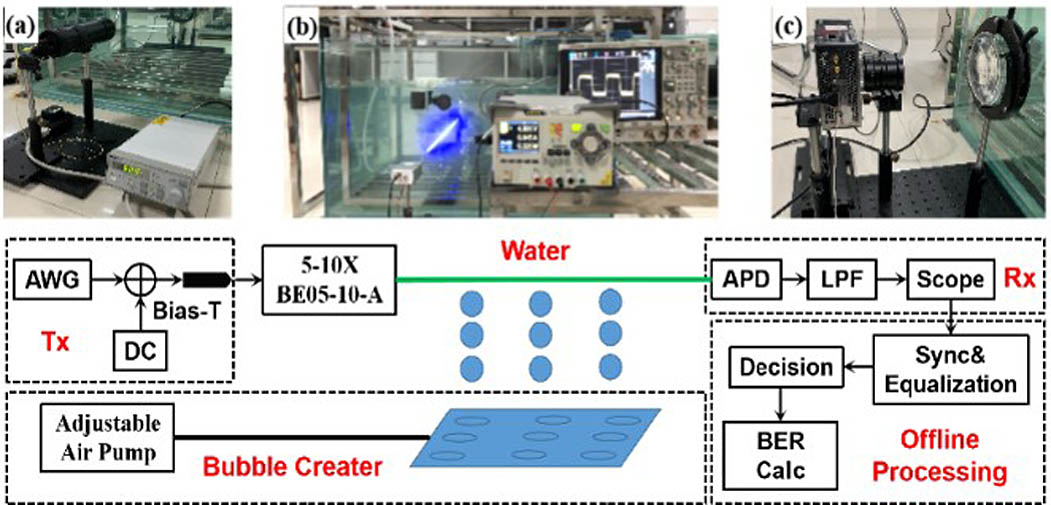Daomin Chen, Jiemei Wang, Shangbin Li, Zhengyuan Xu, "Effects of air bubbles on underwater optical wireless communication [Invited]," Chin. Opt. Lett. 17, 100008 (2019)
Search by keywords or author
- Chinese Optics Letters
- Vol. 17, Issue 10, 100008 (2019)

Fig. 1. Experimental platform with controllable bubbles for UOWC: (a) transmitter, (b) water channel with controllable bubble generation, (c) receiver of high speed visible light camera/APD.

Fig. 2. Series of gray images as bubble density increases.
Fig. 3. Series of gray images as bubble size increases.
Fig. 4. Statistical distribution model fitting of received signal intensity under different bubble density.
Fig. 5. Statistical distribution model fitting of received signal intensity under different bubble size.
Fig. 6. BER performance versus bubble density.
Fig. 7. BER performance versus bubble size.
Fig. 8. BER performance versus bubble density under different PPM modulation orders.
Fig. 9. BER performance versus bubble size under different PPM modulation orders.
|
Table 1. Bubble Density and Size in Different Grades of Air Flow Rate
| ||||||||||||||||||||||||||||||||||||||||||||||||||||||||||||||||||||||||||||||||||
Table 2. Fitting Accuracy and Distribution Parameters of the Statistical Models under Different Bubble Densities
| |||||||||||||||||||||||||||||||||||||||||||||||||||||||||||||||||||||||||||||||||||||||||||||||||||||||||||||||
Table 3. Fitting Accuracy and Distribution Parameters of the Statistical Models under Different Bubble Sizes

Set citation alerts for the article
Please enter your email address



